
Urocissa is a genus of birds in the Corvidae, a family that contains the crows, jays, and magpies.

The red-cheeked cordon-bleu or red-cheeked cordonbleu is a small passerine bird in the family Estrildidae. This estrildid finch is a resident breeding bird in drier regions of tropical Sub-Saharan Africa. Red-cheeked cordon-bleu has an estimated global extent of occurrence of 7,700,000 km2.

The brown tanager is a small South American bird in the tanager family Thraupidae. It is the only member of the genus Orchesticus.

Haplospiza is a small genus of birds in the tanager family Thraupidae. Formerly classified in the bunting and American sparrow family Emberizidae, more recent studies have shown it to belong in the Thraupidae. Its two members breed in subtropical or tropical moist forest in Central and South America. They are often associated with bamboo.
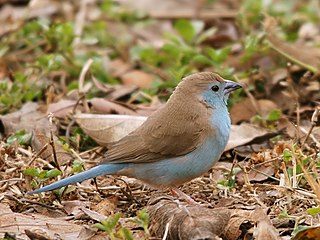
The blue waxbill, also called southern blue waxbill, blue-breasted waxbill, southern cordon-bleu, blue-cheeked cordon-bleu, blue-breasted cordon-bleu and Angola cordon-bleu, is a common species of estrildid finch found in Southern Africa. It is also relatively commonly kept as an aviary bird.

Coryphospingus is a small genus of finch-like tanagers found in South America. Coryphospingus was formerly classified in the family Emberizidae along with the buntings and American sparrows.

Thlypopsis is a genus of birds in the tanager family Thraupidae.

The chestnut-headed tanager is a species of bird in the tanager family Thraupidae this is found in the Atlantic Forest of southeast Brazil, eastern Paraguay and far northeastern Argentina. It was formerly the only member of the genus Pyrrhocoma but is now placed in Thlypopsis.

Tachycineta is a genus of birds in the swallow family Hirundinidae. There are nine described species all restricted to the Americas.
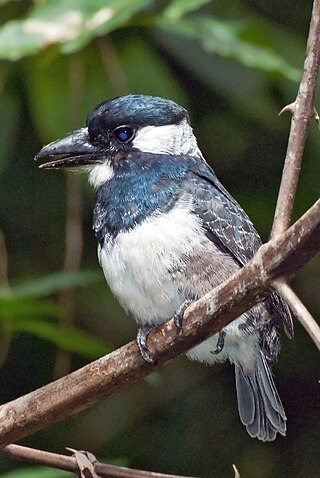
Notharchus is a genus of puffbird in the Bucconidae family.

Aethopyga is a genus of birds in the sunbird family Nectariniidae. Species in this genus are found in South Asia, Southeast Asia and parts of China. Many species such as the grey-hooded sunbird, Apo sunbird, metallic-winged sunbird, handsome sunbird, and Lina's sunbird are endemic to the Philippines.

Yellow penduline tit is a species of bird in the family Remizidae. This small yellow passerine bird is found in semi-arid savanna regions of West Africa.

The hooded mountain tanager is a species of bird in the tanager family Thraupidae. It is the only member of the genus Buthraupis. This yellow, blue and black tanager is found in forest, woodland and shrub in the Andean highlands of Bolivia, Colombia, Ecuador, Peru, and Venezuela. At 23 centimetres (9.1 in) and 85 grams (3.0 oz), it is one of the largest tanagers.
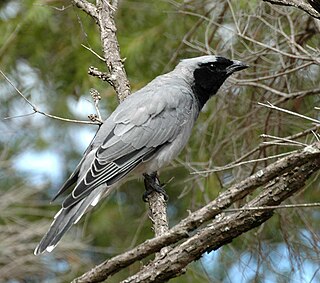
Coracina is a large genus of birds in the cuckooshrike family Campephagidae.
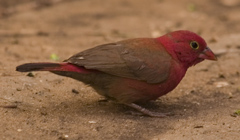
The firefinches form a genus, Lagonosticta, of small seed-eating African birds in the family Estrildidae.

The mourning sierra finch is a species of South American bird in the tanager family Thraupidae. It is the only member of the genus Rhopospina.

Terenura is a genus of insectivorous passerine birds in the antbird family, Thamnophilidae.
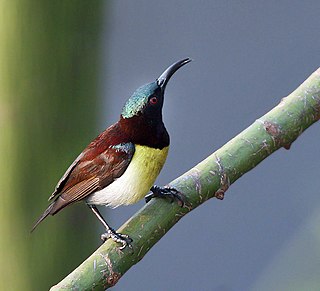
Leptocoma is a genus of sunbirds found from tropical South Asia to Papua New Guinea. Its members are sometimes included in Nectarinia.

Stagonopleura is a genus of small seed-eating birds in the family Estrildidae that are native to Australia.

Poodytes is a genus of passerine birds in the grassbird family Locustellidae.

























